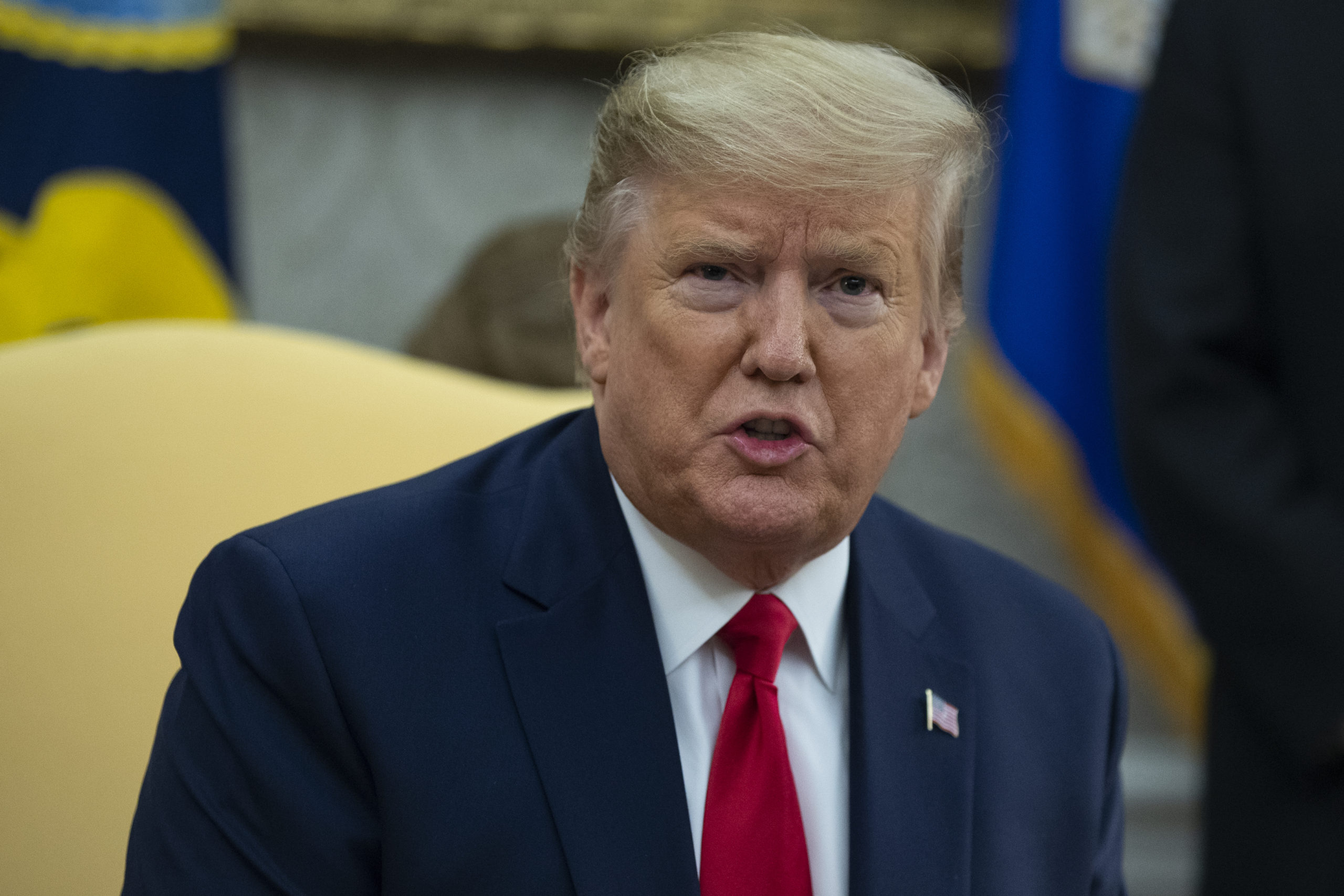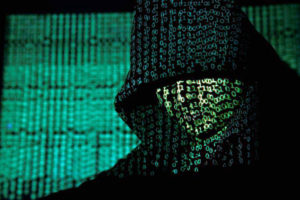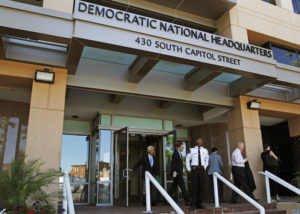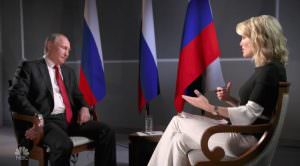As Trial Nears, Trump Keeps Discredited Ukraine Theory Alive
What if, the idea goes, it was actually Ukraine, and not Russia, that interfered in the 2016 election? Evan Vucci / AP
Evan Vucci / AP
The theory took root in vague form well before Donald Trump laid claim to the White House in 2016. The candidate’s close confidant tweeted about it. His campaign chairman apparently spoke about it with people close to him.
What if, the idea went, it was actually Ukraine — and not Russia — that was interfering in the 2016 election?
Never mind that the notion has since been amplified by the president of Russia, the country that U.S. intelligence agencies unequivocally blame for interfering in that year’s presidential race. Or that Trump’s hand-picked FBI director and other American officials have said there’s no information pointing to Ukraine interference. Or that 25 Russians stand charged in U.S. courts with hacking into Democratic emails and waging a covert social media campaign to sway American public opinion.
The Ukraine theory lives on.
Now, Trump’s request for Ukraine to investigate the matter and a political rival, former Vice President Joe Biden, is at the heart of a congressional inquiry that produced Trump’s impeachment by the House of Representatives. A Senate trial is next.
The discredited theory, spread online by GOP allies in interviews and tweets, has been embraced by a president reluctant to acknowledge the reality of Russian election interference, and anxious to show he had reason to be suspicious of Ukraine as the U.S. withheld crucial military aid last year.
The effect: blurring the facts of the impeachment case for many Americans even before it reaches a trial that could begin with days.
Experts fear the strategy leaves the U.S. vulnerable to more misinformation campaigns in the 2020 election and signals to the Kremlin and other foreign actors that Americans are willing to cling to falsehoods.
A review by The Associated Press shows that the Ukraine conspiracy theory traces back to Trump’s 2016 campaign, was spread online and later advanced by Russian President Vladimir Putin weeks after his own country was blamed for election interference. Finally, some of America’s own elected leaders made it their truth.
“The ultimate victim is democracy, is the stability of our nation,” said Nina Jankowicz, a disinformation expert at the nonpartisan Wilson Center, a Washington, D.C., think tank.
The Seeds of a Conspiracy Theory
As U.S. authorities collected evidence in 2016 that Russia had hacked and stolen years of internal emails from the Democratic National Committee, Trump campaign chairman Paul Manafort, who had cultivated extensive business contacts in Ukraine and worked for pro-Russia politicians there, was privately pointing to another culprit.
Manafort, now serving more than seven years in prison for tax fraud and other crimes, suggested then that the attack was probably executed by Ukrainians, according to FBI notes from an April 2018 interview with Rick Gates, Manafort’s former deputy. The idea parroted that of Konstantin Kilimnik, a Manafort business associate who U.S. authorities have assessed has ties to Russian intelligence — an accusation Kilimnik has denied.
Trump aide Michael Flynn, who later became Trump’s first national security adviser, was also adamant within the campaign that Russia couldn’t have carried out the attack and that U.S. intelligence wouldn’t be able to figure out who had done it, Gates recalled.
That skepticism was adopted by Trump himself, who memorably said during a presidential debate that “it could also be China. It could also be lots of other people. It also could be somebody sitting on their bed that weighs 400 pounds, OK?”
All the while, U.S. officials were agreeing with a private cybersecurity firm’s findings that Russia was responsible, collecting evidence over the next several months that tied individual Russian military intelligence officers to the hack.
Adding to the FBI’s concern was the revelation that a Trump campaign official had been told Russia had damaging information about Democratic opponent Hillary Clinton. That July, the bureau opened an investigation into whether Russia and the Trump campaign were working together to sway the election in Trump’s favor, a probe eventually taken over by special counsel Robert Mueller.
Tweets, Articles Fuel Theory
As the Democrats’ stolen emails were published online and the U.S. prepared to publicly blame the Kremlin for the hack, assertions surfaced online that Ukraine had meddled — directly or indirectly — in America’s presidential campaign.
In September 2016 Roger Stone, a Trump confidant later convicted of lying about his efforts to get inside information about the emails, tweeted: “The only interference in the U.S. election is from Hillary’s friends in Ukraine.”
His tweet highlighted a Financial Times article that said some Kyiv leaders were determined “to intervene, however indirectly” in the U.S. election. The story detailed efforts by Serhiy Leshchenko, a former Ukrainian parliament member who opposed Trump’s bid, to expose off-the-books payments Ukraine’s pro-Russia political party made to Manafort.
Leshchenko maintains his efforts don’t amount to interference or compare to Russia’s attack on the U.S. elections.
Still, some Republican legislators, including a few contacted by AP, pointed to the article as proof Ukraine interfered.
“I think both Russia and Ukraine meddled in the 2016 election,” Republican Sen. John Kennedy of Louisiana said last month on NBC’s “Meet the Press. He cited the Financial Times as evidence.
As Trump prepared to take office, news reports fueled doubts online over the conclusion that Russia had hacked the DNC and Clinton campaign.
“So how and why are they so sure about hacking if they never even requested an examination of the computer servers? What is going on?” Trump tweeted on Jan. 5, 2017, the day after a BuzzFeed News article reported that the FBI did not physically examine the Democrats’ servers to determine Russia infiltrated the system.
A Politico report days later documented a Democratic consultant’s opposition research in 2016 on Manafort’s work in Ukraine — which included consulting on behalf of former leader Viktor Yanukovych, who fled to Russia after his 2014 ouster — and described efforts by some Ukraine leaders to support Clinton over Trump.
The article said there was not a top-down effort by Ukraine to push voters toward Clinton, but some Republicans now point to the reporting to support their allegations of meddling.
Citing the reports, anti-establishment conservative and liberal bloggers made misleading connections between Ukraine and CrowdStrike, the cybersecurity firm that traced the hack back to Russia.
This online speculation helped shape the Ukraine conspiracy theory, explained Thomas Rid, a Johns Hopkins University professor who has tracked disinformation campaigns and election interference.
“The landscape has made it so easy to find rabbit holes, and go down these rabbit holes, stay there, and find a community of like-minded amateur sleuths,” Rid said.
It is the nebulous nature of the Ukrainian theory, which leaves room for both direct and indirect interference, that has given the idea a shape-shifting, evolving form that has contributed to its staying power.
One online commentator misleadingly claimed CrowdStrike’s co-founder Dmitri Alperovitch works for a think tank funded by a Ukrainian oligarch. Alperovitch is a fellow at the Atlantic Council, which is based in the U.S. and receives funding from a variety of sources. Donations from Ukrainian oligarch Victor Pinchuk’s foundation made up less than less than 1.6 percent of the group’s funding in 2018.
“A great deal of misinformation relies upon serendipity or mere contacts,” said John Herbst, a former U.S. ambassador to Ukraine and director of the Atlantic Council’s Eurasia Center. “Then they draw egregious or conspiratorial conclusions based on those contacts.”
Putin himself weighed in days after Trump moved into the White House, publicly claiming that Ukraine’s entire government had favored Clinton during the election and now needed to “improve relations” with the new Trump administration.
“As we all know, during the presidential campaign in the United States, the Ukrainian government adopted a unilateral position in favor of one candidate,” Putin said in at a news conference that February with Hungary’s prime minister.
Russian media used the comments to suggest it was Ukraine that had actually interfered.
It was convenient for the Kremlin to point the finger at another offender: Just weeks earlier, U.S. intelligence agencies had released a detailed report accusing Russia of interfering in the election on Trump’s behalf. And Ukraine was the perfect scapegoat, experts said. The Kremlin has been locked in a 5-year war with Ukraine that has killed more than 14,000 people.
“It’s in Russia’s interest to amplify this issue because it wants Ukraine to be undermined,” said Jankowicz, the disinformation expert.
By April 2017, the Ukraine conspiracy theory was being promoted by Trump himself.
Trump Tests New Ukraine Conspiracy Theory
Trump sat at the desk of the Oval Office, just shy of his first 100 days on the job, when he falsely suggested in an Associated Press interview that CrowdStrike had even stronger ties to Ukraine.
“I heard it’s owned by a very rich Ukrainian, that’s what I heard,” Trump said. “Why didn’t they allow the FBI in to investigate the server? I mean, there is so many things that nobody writes about. It’s incredible.”
In fact, CrowdStrike is a publicly held California company founded by two U.S. citizens — George Kurtz and Alperovitch, who was born in Russia but spent his adult life in America. The company has identified cyberattacks for major U.S. clients, including the U.S. government and the National Republican Congressional Committee.
And the FBI didn’t need to physically take the DNC servers to confirm CrowdStrike’s findings that Russia was behind the attack, said Eugene H. Spafford, a computer science professor at the Center for Education and Research in Information Assurance and Security at Purdue University who has assisted the bureau in cases.
Instead, CrowdStrike took digital images of the DNC system, capturing files, photos, emails, and browsing history to determine who had breached the system. Copies of those images were then handed over to the FBI, the company says.
The process is similar to how investigators at a crime scene take photos that are later analyzed for clues.
A physical review of the DNC’s data, a cloud system comprised of at least 140 servers, would have disabled the Democrats’ computer systems for days or weeks amid a presidential election, Spafford noted.
But Trump took his suspicions about the servers directly to Volodymyr Zelenskiy, the newly elected Ukraine president in the now-infamous July 25 phone call that resulted in articles of impeachment against Trump.
“I would like you to find out what happened with this whole situation with Ukraine, they say CrowdStrike … I guess you have one of your wealthy people…” Trump asked of Zelenskiy on the call, according to notes released by the White House in September. “The server, they say Ukraine has it.”
Dozens of news outlets debunked Trump’s comments and continue to do so. Finding itself at the center of the phone call, CrowdStrike then released a blog post rebuffing the president’s claims. The president’s own national security advisers rebutted the theory to no avail, former White House aide Fiona Hill told impeachment investigators in November.
“We spent a lot of time … trying to refute this one in the first year of the administration,” Hill said.
The Theory Endures
Still, Trump keeps the notion alive.
He insisted to Fox News viewers in November that he only withheld aid from Ukraine to investigate corruption in the country, hinting once again that the DNC’s servers are hidden there.
“You know, the FBI has never gotten that server,” Trump said. “That’s a big part of this whole thing. Why did they give it to a Ukrainian company?”
Parts of the Ukraine election interference theory have since been echoed by a growing number of the president’s Republican allies — some of whom concede that Russia interfered but posit that Ukraine did too.
Days before the president was impeached, Sen. Ted Cruz told NBC’s “Meet the Press” that there’s “considerable evidence” that Ukraine had interfered.
His office later said in a statement: “Russia’s campaign to interfere in our election was real and systematic. It is also true that Ukrainian officials did not want … then-candidate Trump to win. The two are not mutually exclusive.”
And as his Senate impeachment trial looms, Trump is pressing GOP senators to rally behind the discredited theory — asking his personal attorney Rudy Giuliani to brief them on his trip to eastern Europe, where he searched for witnesses and documents to back up the claims. Videos documenting his trip have aired on the pro-Trump television network, One America News, and have been viewed thousands of times online.
Hill, a Russia expert, told Congress in November that political leaders who spread such falsehoods about Ukraine are only polarizing the U.S. further and turning it into an easy target for misinformation campaigns by such foreign powers as Russia.
She warned: “These fictions are harmful even if they are deployed for purely domestic political purposes.”
_____
Associated Press writers Mary Clare Jalonick in Washington and Yuras Karmanau in Kyiv contributed to this report.
Your support matters…Independent journalism is under threat and overshadowed by heavily funded mainstream media.
You can help level the playing field. Become a member.
Your tax-deductible contribution keeps us digging beneath the headlines to give you thought-provoking, investigative reporting and analysis that unearths what's really happening- without compromise.
Give today to support our courageous, independent journalists.








You need to be a supporter to comment.
There are currently no responses to this article.
Be the first to respond.